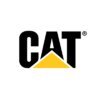Machine Learning Intern
40+ Machine Learning Intern Interview Questions and Answers

Asked in Bosch

Q. Have you ever worked with Python, and do you possess any knowledge of Convolutional Neural Networks (CNN)?
Yes, I have experience working with Python and knowledge of Convolutional Neural Networks (CNN).
I have used Python for various projects, including data analysis and machine learning.
I have implemented CNNs for image classification tasks using libraries like TensorFlow and Keras.
I am familiar with concepts like convolutional layers, pooling layers, and fully connected layers in CNNs.

Asked in FullThrottle Labs

Q. Different types of NER libraries and their performances
There are various NER libraries available with different performances.
Stanford NER - high accuracy but slow processing
SpaCy - fast and accurate, supports multiple languages
NLTK - widely used, but lower accuracy compared to others
Flair - contextual embeddings for better accuracy
BERT - pre-trained models for NER tasks
CRF++ - Conditional Random Fields for NER
GATE - rule-based and machine learning-based NER
OpenNLP - Java-based NER library
Machine Learning Intern Interview Questions and Answers for Freshers

Asked in Feynn Labs

Q. What is the difference between inference learning and prediction learning?
Inference learning focuses on understanding the underlying relationships in data, while prediction learning focuses on making accurate predictions based on data.
Inference learning involves understanding the causal relationships between variables in the data.
Prediction learning focuses on building models that can accurately predict outcomes based on input data.
Inference learning is more concerned with understanding the 'why' behind the data, while prediction learning is more f...read more
Asked in Climate Connect Digital

Q. Explain all the steps you will take to build a regression model given a time series dataset.
To build a regression model for a time series dataset, several steps need to be followed.
Preprocess the data by checking for missing values, outliers, and transforming the data if necessary.
Split the data into training and testing sets.
Select a suitable regression algorithm such as linear regression, decision trees, or neural networks.
Train the model on the training set and evaluate its performance on the testing set.
Tune the hyperparameters of the model to improve its perfor...read more

Asked in Feynn Labs

Q. Mention some optimizers and loss functions used in machine learning?
Some optimizers and loss functions used in machine learning
Optimizers: Adam, SGD, RMSprop
Loss functions: Mean Squared Error (MSE), Cross Entropy, Hinge Loss

Asked in Juppiter AI Labs

Q. What is reinforcement learning, and can you explain it?
Reinforcement learning is a type of machine learning where an agent learns to make decisions by receiving feedback in the form of rewards or punishments.
Reinforcement learning involves an agent interacting with an environment to learn how to make decisions.
The agent receives feedback in the form of rewards or punishments based on its actions.
The goal is for the agent to learn a policy that maximizes its cumulative reward over time.
Examples include training a robot to navigate...read more
Machine Learning Intern Jobs




Asked in FullThrottle Labs

Q. What happens during an NER process?
NER process identifies and extracts named entities from text data.
NER stands for Named Entity Recognition.
It involves identifying and classifying entities such as people, organizations, locations, and dates.
NER can be performed using rule-based systems or machine learning algorithms.
Examples of NER applications include information extraction, sentiment analysis, and chatbots.
Popular NER tools include spaCy, NLTK, and Stanford NER.

Asked in Cognizant

Q. What is the difference between supervised and unsupervised learning?
Supervised learning uses labeled data to train the model, while unsupervised learning uses unlabeled data.
Supervised learning requires a target variable for training, while unsupervised learning does not.
In supervised learning, the model learns from labeled examples to make predictions on new data, while unsupervised learning finds patterns and relationships in data.
Examples of supervised learning include classification and regression tasks, while unsupervised learning includ...read more
Share interview questions and help millions of jobseekers 🌟


Asked in FullThrottle Labs

Q. What is the difference between Bag of Words (BOW) and Count Vectorizer?
BOW and Count Vectorizer are both techniques used for text representation in NLP.
BOW stands for Bag of Words and represents text as a collection of words without considering the order.
Count Vectorizer is a technique that counts the frequency of each word in a document and represents it as a vector.
BOW is a simpler technique and is used for tasks like sentiment analysis, while Count Vectorizer is used for more complex tasks like topic modeling.
Both techniques are used in NLP f...read more

Asked in Feynn Labs

Q. What types of machine learning projects have you worked on?
I have worked on projects involving image classification, natural language processing, and predictive modeling.
Image classification using convolutional neural networks
Sentiment analysis using recurrent neural networks
Predictive modeling for sales forecasting

Asked in BDx Data Centers

Q. explain Sampling , types of sampling , need of sampling
Sampling is the process of selecting a subset of data from a larger population for analysis.
Types of sampling include random sampling, stratified sampling, cluster sampling, and systematic sampling.
Sampling is necessary when it is not feasible or practical to analyze the entire population.
Sampling can help reduce costs and time required for analysis.
Sampling can also help reduce bias in the analysis by ensuring that the sample is representative of the population.
Examples of s...read more
Asked in Climate Connect Digital

Q. What is the difference between inferential statistics and descriptive statistics?
Inferential statistics infers properties of a population from a sample, while descriptive statistics describes the sample itself.
Descriptive statistics summarizes and organizes data, while inferential statistics makes predictions and inferences about a larger population based on a sample.
Descriptive statistics includes measures of central tendency (mean, median, mode) and measures of variability (range, standard deviation), while inferential statistics includes hypothesis tes...read more
Asked in Climate Connect Digital

Q. What techniques can be used to handle missing values in time series data?
Techniques to handle missing values in time series data.
Imputation using mean, median or mode of the previous or next values.
Interpolation using linear or spline methods.
Extrapolation using regression models.
Dropping missing values if they are insignificant in number.
Using deep learning models like LSTM to predict missing values.

Asked in Feynn Labs

Q. What is the difference between logistic and linear regression?
Logistic regression is used for binary classification while linear regression is used for regression tasks.
Logistic regression is used when the dependent variable is binary (0 or 1), while linear regression is used when the dependent variable is continuous.
Logistic regression predicts the probability of a certain class or event occurring, while linear regression predicts a continuous value.
Logistic regression uses a sigmoid function to map predicted values between 0 and 1, wh...read more

Asked in Feynn Labs

Q. What is the significance of the elbow method?
Elbow curve helps in determining the optimal number of clusters in K-means clustering.
Elbow curve is a plot of the number of clusters against the within-cluster sum of squares.
The point where the curve shows a sharp decrease and starts to flatten out is considered as the optimal number of clusters.
It helps in finding the right balance between overfitting and underfitting in clustering.
For example, if the elbow curve shows a clear bend at 3 clusters, then 3 clusters would be t...read more

Asked in Feynn Labs

Q. What's an outlier? How to handle them?
An outlier is a data point that differs significantly from other observations in a dataset.
Outliers can be identified using statistical methods such as Z-score, IQR, or visualization techniques like box plots.
Handling outliers can involve removing them, transforming them, or using robust statistical methods.
Examples of handling outliers include winsorizing, log transformation, or using algorithms that are robust to outliers like Random Forest.

Asked in Feynn Labs

Q. What are the different types of learning in Machine Learning?
Different types of learning in Machine learning include supervised learning, unsupervised learning, semi-supervised learning, reinforcement learning, and self-supervised learning.
Supervised learning: Training data is labeled, algorithm learns to map input to output.
Unsupervised learning: Training data is unlabeled, algorithm learns patterns and relationships in data.
Semi-supervised learning: Combination of labeled and unlabeled data for training.
Reinforcement learning: Agent ...read more

Asked in Feynn Labs

Q. Explain Support Vector Machines.
Support Vector Machine is a supervised learning algorithm used for classification and regression analysis.
SVM finds the best hyperplane that separates the data into different classes.
It maximizes the margin between the hyperplane and the closest data points.
SVM can handle both linear and non-linear data using kernel functions.
It is widely used in image classification, text classification, and bioinformatics.
SVM can also be used for outlier detection and feature selection.

Asked in Feynn Labs

Q. What is the difference between supervised learning and unsupervised learning?
Supervised learning uses labeled data to train the model, while unsupervised learning uses unlabeled data.
Supervised learning requires labeled data with input-output pairs for training, while unsupervised learning does not require labeled data.
In supervised learning, the model learns to map input data to the correct output during training, whereas in unsupervised learning, the model finds patterns and relationships in the data without explicit guidance.
Examples of supervised ...read more

Asked in Analysed

Q. How much experience do you have with computer vision?
I have worked on computer vision projects for 6 months during my coursework.
Completed a computer vision project on object detection using YOLOv3 during a computer vision course
Implemented facial recognition using OpenCV in a personal project
Familiar with image processing techniques such as edge detection and image segmentation

Asked in Mad Street Den

Q. What is the Convolutional Neural Network algorithm?
Convolutional neural network (CNN) is a deep learning algorithm commonly used for image recognition and classification.
CNN is designed to automatically and adaptively learn spatial hierarchies of features from input data.
It uses convolutional layers to apply filters to input data, extracting features at different spatial locations.
Pooling layers are used to reduce the spatial dimensions of the input data while retaining important information.
CNNs are commonly used in computer...read more

Asked in Analysed

Q. Have you worked on machine learning before?
Yes, I have worked on machine learning before.
I have completed several online courses on machine learning.
I have also worked on a project where I used machine learning algorithms to predict customer churn for a telecom company.
I have experience with Python libraries such as scikit-learn and TensorFlow.

Asked in Feynn Labs

Q. Explain K-means Clustering.
K means Clustering is a unsupervised machine learning algorithm used to group similar data points together.
K means clustering is used to partition a dataset into K clusters based on their similarity.
It is an iterative algorithm that starts with K random centroids and assigns each data point to the nearest centroid.
The centroids are then recalculated based on the mean of the data points in each cluster and the process is repeated until convergence.
It is widely used in image se...read more

Asked in TCS

Q. What is the difference between lists and tuples?
Lists are mutable, tuples are immutable in Python.
Lists are enclosed in square brackets [], tuples are enclosed in parentheses ().
Elements in a list can be changed, added, or removed, while elements in a tuple cannot be changed.
Lists are typically used for collections of similar items, tuples are used for fixed collections of items.
Example: list_example = [1, 2, 3], tuple_example = (4, 5, 6)

Asked in Feynn Labs

Q. what is svm,how many dimensions in rbf?
SVM stands for Support Vector Machine, RBF stands for Radial Basis Function. RBF can have infinite dimensions.
SVM is a supervised machine learning algorithm used for classification and regression tasks.
RBF is a kernel function used in SVM to map data into a higher-dimensional space.
RBF can have infinite dimensions, allowing it to capture complex relationships in the data.

Asked in Feynn Labs

Q. What are the parameters of machine learning?
Machine learning parameters include hyperparameters, model parameters, and training parameters that influence model performance.
Hyperparameters: Settings that are not learned from the data, e.g., learning rate, batch size.
Model Parameters: Weights and biases learned during training, e.g., coefficients in linear regression.
Training Parameters: Settings related to the training process, e.g., number of epochs, optimization algorithm.
Regularization Parameters: Techniques to preve...read more

Asked in Infosys

Q. What is machine learning?
Machine learning is a subset of artificial intelligence that enables machines to learn from data and improve their performance.
Machine learning involves training algorithms to make predictions or decisions based on data
It uses statistical techniques to identify patterns and relationships in data
Examples include image recognition, speech recognition, and recommendation systems
It can be supervised, unsupervised, or semi-supervised
It has applications in various fields such as fi...read more

Asked in Feynn Labs

Q. What is deep learning?
Deep learning is a subset of machine learning that uses neural networks to model and solve complex problems.
Deep learning involves training neural networks with multiple layers to learn representations of data
It is used for tasks such as image and speech recognition, natural language processing, and autonomous driving
Popular deep learning frameworks include TensorFlow, PyTorch, and Keras

Asked in TCS

Q. What is Linear Regression?
Linear Regression is a statistical method to model the relationship between a dependent variable and one or more independent variables.
It is used to predict a continuous outcome variable based on one or more predictor variables.
It assumes a linear relationship between the dependent and independent variables.
It is commonly used in fields like finance, economics, and social sciences.
It can be simple linear regression (one independent variable) or multiple linear regression (mor...read more

Asked in Juppiter AI Labs

Q. Supervised and unsupervised learning algorithms
Supervised learning uses labeled data to make predictions, while unsupervised learning finds patterns in unlabeled data.
Supervised learning requires labeled data to train the model and make predictions on new data.
Examples of supervised learning include classification and regression.
Unsupervised learning finds patterns in unlabeled data without any predefined output.
Examples of unsupervised learning include clustering and dimensionality reduction.
Interview Questions of Similar Designations
Interview Experiences of Popular Companies






Calculate your in-hand salary
Confused about how your in-hand salary is calculated? Enter your annual salary (CTC) and get your in-hand salary


Reviews
Interviews
Salaries
Users










